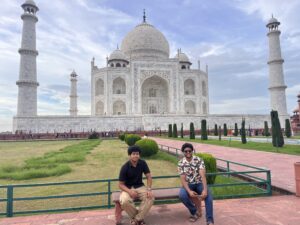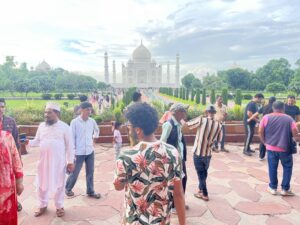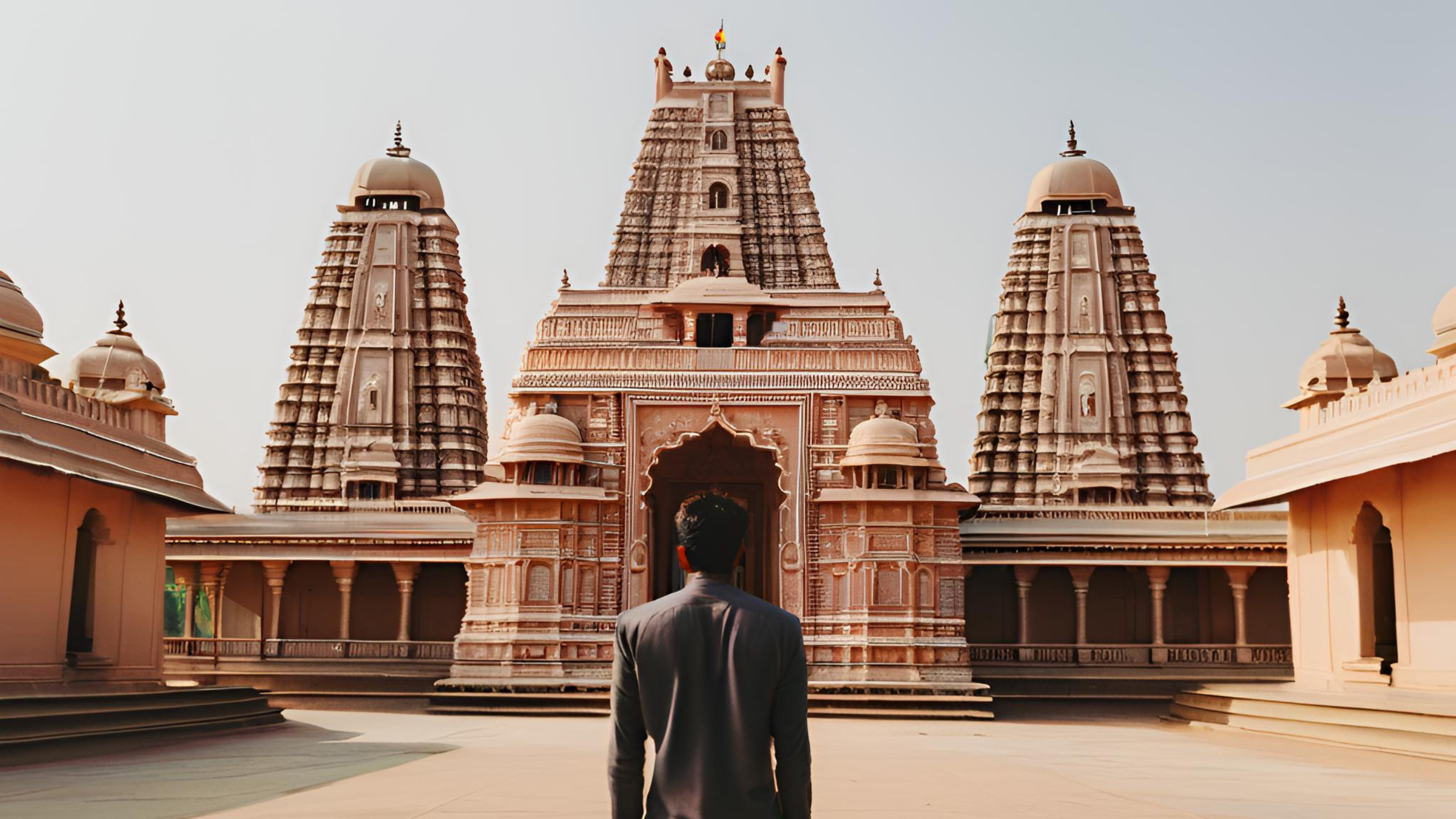Reflecting further on my recent trip to India, two separate thoughts struck my mind. The first one is about symmetry.
Does symmetry make architecture beautiful?
What is it about certain buildings that make them so captivating? Is it their shape, colour, or the way everything comes together? Interestingly, symmetry is often a big part of this equation, but does perfect symmetry always equate to beauty? I’ve come across many weird looking asymmetrical buildings that are aesthetically pleasing – like the Walkie Talkie building or the Shard – which got me thinking: what is it that truly makes architecture stand out?
Take my recent encounters with symmetrical buildings as an example:
India Gate: As I approached India Gate, with Subhash Chandra Bose saluting at the entrance, the symmetry of the structure struck me immediately. It was like the architecture projected unity and order. The consistent color and material choices felt deliberate, as if the designers wanted to convey something deeper. Walking around the gate, I noticed how the long, straight road stretching to Rashtrapati Bhavan added to the overall sense of harmony. It wasn’t just a monument; it was a thoughtful space that made me reflect on its historical significance. It filled me with a sense of respect and gratitude.

Taj Mahal: The pinnacle of symmetry, right? Well, not quite! Here’s a fun fact I learned — those four iconic minarets actually lean outwards slightly. This subtle design feature ensures that, in the event of a collapse, the minarets would fall away from the main mausoleum, preserving its beauty. While almost perfectly symmetrical, there’s this clever imperfection baked in.


Though, accepting the almost perfect symmetry, as I wandered around the Taj, I found myself naturally falling into a rhythm, moving in a methodical, almost meditative, way through the space. I guess this is the symmetry at play again.
Lotus Temple and Humayun’s Tomb: Both of these landmarks follow a similar script, using symmetry to create an atmosphere of calm and order. I touched on these two in my previous post when I explored how context shapes our experience of a place.
Let’s zoom out a little.
While symmetry embodies order and balance, asymmetry offers a fascinating contrast. Asymmetrical architecture evokes a sense of chaos and imbalance, but in a way that’s equally compelling. This kind of design challenges conventional thinking and emphasises uniqueness. It reminds me of Steve Jobs’ famous mantra — “Think Different.” This approach to architecture encourages us to think outside the box, literally and figuratively. It pushes boundaries and sparks creativity, leading to innovations that are both original and inspiring. Asymmetry, therefore, is not just about breaking away from tradition; it’s about paving new paths and inspiring fresh perspectives.
Just as architecture relies on principles to guide design, religious rituals are steeped in tradition, each with their own logic. This got me thinking about another concept: questioning the purpose behind rituals.
The art of questioning (and practicing) religious rituals
During my visits to Srisailam and Tirupati, I found myself in conversation with various priests, asking questions about why we practice certain rituals.
- “What is the crown-like ‘kiritam’ they use to bless devotees in Temples?”
- “What is the meaning of this chant?”
- “What is a lingam and what is its purpose?”
My curiosity wasn’t to challenge but to genuinely understand the reasoning behind these practices. What’s their purpose? Why do we follow them?
I unfortunately didn’t get satisfactory answers from the priests, but the topic led to an interesting discussion with my mum about whether it’s better to question everything or to follow certain things without questioning. We came to the conclusion that perhaps the answer lies somewhere in between. Sure, following practices without questioning can still have value, especially when it comes to rituals. But, in my mind, understanding why we do something makes it easier to connect with and appreciate the practice itself. It’s almost like adding context to a ritual makes it not only more enjoyable but also more meaningful.
Let’s take the Vedas as an example, something I recently learned more about. The Vedas were originally composed to be passed down through generations without alteration, using rhythmic chanting to ensure the knowledge remained intact. This method of transmission — through song and memorisation — was a powerful way to preserve vast amounts of information over centuries. When you consider the sheer depth and breadth of the Vedas, it becomes clear why certain practices are followed without question. The vastness of this knowledge can be overwhelming, and perhaps we simply don’t have the capacity or time to fully grasp the logic behind it all. In cases like this, maybe it’s not about blindly following but recognising the limitations of understanding something so profound and trusting in the wisdom passed down. Some traditions, after all, may be designed to preserve knowledge in ways that go beyond immediate comprehension, waiting for us to explore them when we are ready.
On the flip side, there’s also the idea that sometimes questioning everything might lead to answers we eventually accept. So, why not just embrace the practice to begin with? This creates an interesting loop: you question to accept the ritual/practice, but you need to practice to fully understand why you questioned in the first place. It’s an interesting paradox.
At this point in my life, questioning everything feels essential. I find myself examining every ritual I come across, trying to uncover its meaning. Yet, in most cases, I don’t get deep or satisfying answers. Often, I end up accepting the ritual for what it is, mentally framing a justification for the practice. Still, I believe there’s value in reflecting on these rituals, whether or not I find answers. It’s the process of questioning that matters—it’s a way of thinking that, for me, is effective in shaping a deeper understanding.
Let’s tie everything together… Bring order, if you will.
Just as symmetry in architecture offers a sense of order and purpose, questioning religious practices can bring clarity and deeper understanding to faith. Both involve a thoughtful exploration — whether it’s the deliberate design of a monument or the reason behind a ritual. In architecture, symmetry might guide our perception, while in religious practices, questioning helps us navigate complex rituals. Ultimately, both are about seeking meaning, whether through the structures we build or the rituals we choose to follow.
This whole idea feels like something fun to explore further down the line. In this post, I focused on how order helps us make sense of things, but in contrast could chaos be just as meaningful? Maybe there’s something intriguing in the messiness too. It’s definitely a thought worth chasing.



Leave a Reply